To date, there are more than 170 types of honeysuckle in the world. At the same time, almost all of them grow in the form of decorative shrubs. Flowers on the shoots of culture can have a variety of forms and coloring. On some shrubs, edible fruits even grow. Practically all parts of the plant are useful for health properties. Therefore, the honeysuckle is considered to be a unique culture. Next, we consider in more detail the characteristics of Brown's honeysuckle, as well as the rules for planting and care for this plant.
Brown honeysuckle: Description
It is very difficult because of the abundance of all kinds of honeysuckle choose a specific variety for planting in your garden. So, for a start you need to decide for what purpose is planted honeysuckle. If you wish to obtain useful early berries, from which you can cook the jam, make juice healing, it is best to choose the Altai or Kamchatka honeysuckle, the fruits of which are considered edible. If you need to decorate the gazebo curly greens, then there a lot more options. For example, you can choose upright or honeysuckle, vine. The first type, in particular, are golden, Tatar and alpine honeysuckle. The second type include such varieties of honeysuckle as Capriol, Brown, Curly and Telman.
Depending on the variety honeysuckle may be low and high. In addition, the shrubs can be colored with fruits or flowers. Most importantly, the honeysuckle is completely undemanding plant, allowing it to grow even novice gardeners. Different types of honeysuckle fruits have different colors. In this case, the most important thing to know what are the only edible blue berries, which have a light blue-gray patina. Berries are other shades - poisonous. In addition, the fruits of different varieties of edible honeysuckle may have a different shape and taste. All these varieties depending on the maturation period are - early and late. The most popular are still early varieties of culture.
Honeysuckle taste the same delicious, like blueberries or mulberries. Garden varieties of honeysuckle are perfect to satisfy your hunger or prepare fresh juice. Depending on the weather, the culture can bear fruit by the middle of May or in early June. Collected honeysuckle berries are usually due to watery rather poorly stored and are not transportable. Future use honeysuckle hardly manage to procure. On one bush can usually be collected from the 1 to 2 kg of fruits. Because of such low yields fruit almost do not sell on the market.
Honeysuckle Brown has the features:
- The leaves of this variety culture have an oval shape, and thus fuse together. Color leaves - dark green. Below are bluish.
- Flowering variety of flowers red shade. flower size in diameter reaches 6 cm. Buy seeds for planting honeysuckle Brown can be in a specialty store for gardeners or "with hands" at the gardeners.
- Honeysuckle Brown has good winter hardiness. Thus, it is possible to plant honeysuckle, even on a small plot of land. It is resistant to drought, frost, and various diseases.
- Brown's honeysuckle received good feedback from many gardeners due to the fact that this plant is unpretentious and grows even in adverse climatic conditions.
- The fruits of culture of this variety cannot be eaten.
Features of growing honeysuckle
Like any decorative plant, Brown's honeysuckle requires a certain care. It is no particularly demanding, but some rules must be followed to achieve good results:
- The overwhelming majority of curly honeysuckle varieties like well-lit sections. The lack of sunlight can cause degradation of shoots, bad flowering and fruiting. It should be taken into account that the roots of the plant do not like to dryness, so they should be shaded. This becomes the reason that choosing a plot for the cultivation of the honeysuckle is very problematic.
- From the soils for landing of the honeysuckle of Brown are most suitable suicide soils and loams with neutral or weakly acid medium. The perfect primer for this plant is a mixture of a delicate land, sand and peat in proportion 3: 1: 1. If this is not available, then you should not get upset. The honeysuckle can be planted on any soil, naturally, adjusting the regime of irrigation and feeding.
- Brown's honeysuckle can only plant in spring in well-fat soil, because it has a late period of vegetation.
- When choosing a landing room, it is necessary to provide a plant maximum protection against cold northern winds, as it does not tolerate cold too well.
- Since the honeysuckle is not capable of self-polling, it is necessary to consider the landing of two or several plants near each other. The plants of various varieties can be neighbors. In this case, you can collect seeds and grow honeysuckle with new shades of flowering.
Reproduction of the honeysuckle Brown
The reproduction of this plant is carried out both seeds and processes. In this case, both methods give equally good results:
- Seeds for the first method are harvested at the end of October. Remove them from routine fruits, larger the pulp of the latter through a sieve.
- After that, the seeds should be dried and stored in a dry, protected from the sun's beams until the start of landing.
- A few weeks before disembarking, it is necessary to conduct a seed stratification procedure. For this, they are maintained at a temperature of from 0 to + 5⁰s. This procedure is carried out in order to bring the planting material to the natural conditions with which it will face when landing. Thanks to this, you can achieve the best germination of seeds and better sprouts. With this method of reproduction, the honeysuckle begins to bloom only after 3 years.
Vegetative reproduction is more common among gardeners. With this approach, the culture is much simpler:
- The cuttings are harvested late autumn or early spring. To do this, part of the stem with a few eyes is neatly cut with a knife. The average length of cuttings is 15 cm.
- The cuttings are planted either in the fall or at the beginning of spring. If the seedlings are planted in the spring, they are binding to the bundle and leave for storage in the basement in the sandbox.
- When landing for the winter, the cuttings must be protected from frost. For this, they are cheered by the earth and are covered with foliage.
There is also a method of growing honeysuckle from green cuttings:
- For this, the most strong annual shoots are selected. After the plant is flashing, they are cut into small cuttings with a length of 10-15 cm. It is necessary to do this in such a way that the slice is located at a distance of 1.5 cm from the sheet.
- Since such cuttings are rooted very well, apply root growth stimulants are not necessary. Special attention should be paid to watering the area with green cuttings. The lack of moisture can slow down the growth of the roots, and the heat drying will lead to the death of landing.
Brown honeysuckle: landing
Order and landing rules:
- Sowing Brown's honeysuckle begin early in spring. Soil by this time should fully utter. Otherwise, seeds may die. For disembarking, furrows are prepared in which the seeds are sighable at a distance of at least 1 meter. The depth of the furrow should not be more than 2 cm. Too large layer of soil over crops can cause a long part of the sowing.
- The honeysuckle differs in that it takes a lot of time since landing until shoots appear. In most cases, the first sprouts can only be seen by September. In order to accelerate the appearance of sprouts from seeds, you can not heigh their open soil, but in home greenhouses.
- Before planting in a greenhouse, seeds need to germinate a little. For this, a flat vessel is taken into which water is poured. From above, filter paper is stacked on it. The ends of the paper strips are descended into the vessel, and the remainder of the strips are laid out seeds and covered with a polyethylene film. Paper skips in its fibers moisture, which falls on the seeds.
- A few days later, wake-up seeds can be planted into the ground. To do this, you can make a simple design with your own hands. An ordinary box of plywood or boards is taken. It is stacked by a layer of drainage from pebbles, crumbs or broken bricks. His task is to prevent the stagnation of moisture and seed rotting. On top of the drainage, a mixture of turf, sand and humidia (peat) in proportions 3: 1: 1, respectively.
- In the ground they make grooves with a depth of 2 cm. They are slightly moistened and lay paper strips with seeds in them, after which they are covered with soil. The box from above is rimmed with a polyethylene film, which is removed from time to time to moisturize the soil. Do it with a spray gun.
- After the appearance of a pair of real leaves, the sprouts can be divened and planted on the garden. It is necessary to do this during the low activity of the Sun, not allowing direct sunlight on planting material.
Brown honeysuckle in landscape design
Like all curly plants, Brown's honeysuckle is often used in landscape design. When the bush grows, it can become excellent additions to any floral compositions, such as:
- Hedges. High honeysuckle bushes are an excellent "building material" for zoning the site, to enhance it from the neighbors' gaze. In this case, the hedge will affect the decorativeness of flowering and its fruit. Often the honeysuckle is used to decorate simple concrete fences, after which they look more effectively.
- Vertical gardening. The curly honeysuckle is an excellent laike of facades of houses, arbors, hozpostroops. In addition to decorative properties, they block the sun's rays, preventing the heating of the walls of the house.
- Trellier. For its device between two pillars stretch the grid. Brown's crushed Liana Liana forms an interesting blooming carpet that will constantly delight the eye.
Brown honeysuckle varieties
During the existence of this plant, several amazing varieties were brought by breeders that have differences between themselves. The most widely known among them are:
- Dropmore (Scarlet). This variety was removed in Canada in the middle of the 20th century and is the most popular among gardeners. It has a large amount of bright-scarlet inflorescences with an orange core. Sowing the honeysuckle Scarlet Brown start early in spring. Begins to bloom the honeysuckle Brown Dropmore in early June, while flowering can continue until the end of September. A distinctive feature of this variety is its cold resistance.
- Golden jumps Mintrum. This variety has a copper-yellow colors. Like the previous variety, the plant blooms for quite a long time. Fruits Golden Spring Mintrum have orange color.
- Brown's honeysuckle fucciavoid. This variety is unlike the first two more compact. The bush grows in a height of no more than 2 m, which is perfect for small gardens. Fuxioides blooms to late autumn with a break in August. Flowers are dark orange with a crimson.
Honeysuckle: Properties and Applications
- The honest is used as an antipyretic reinforcing agent, which is useful for colds and respiratory diseases. Berries are used to prepare rinsing, which helps with sore throats. In addition, the honeysuckle is washed with eye diseases. The honeysuckle is used to add to the baths that help with rheumatism.
- The culture is good not only to the fact that it matures early, but also by the fact that it contains a lot of healthy substances in itself. For example, a lot of magnesium is concentrated in edible fruits, vitamin P, which makes the culture useful for the cardiovascular system. Thanks to this vitamin, the honeysuckle is used to strengthen blood vessels.
- By the content of ascorbic acid, the honeysuckle does not sleep Kiwi. As for the number of potassium, the honeysuckle is inferior to the championship only a lounge.
It is noteworthy that the composition of the fruit may vary depending on the growth of the shrub. For example, if the culture grows in a hot climate, the acidity of fruits will decrease, while the sugar, tanning substances increase. If the berry grows in cool and wet conditions, the acidity of fruits is contrary to the contrary, while the amount of vitamin C increases in the moderately continental climate in the fruit of the honeysuckle will be contained more monosaccharides and ascorbic acid.
- The fruits of the honeysuckle have knitting properties, which allows them to be used when the stomach disorder.
- The fruit of the honeysuckle is useful to people with elevated arterial pressure and at small-class.
- The honeysuckle has choleretic, diuretic and anti-inflammatory properties. It is also able to reduce body temperature.
- In folk medicine, the honeysuckle is used during bleeding. It is successfully used in the treatment of malaria, diseases of the gallbladder, the disorders of the tract and hypertension. In addition, the honeysuckle is able to normalize the operation of the secretory function of the stomach.
- It should also be noted that the shoots of the honeysuckle are used in vegetable mixtures used to treat such serious diseases such as tuberculosis, dysentery, lung inflammation and various purulent rashes.
- Fresh berries are used as a sliding, anti-cutting agent. In addition, the use of these fruits improves the stomach operation.
- Culture has also been applied in cosmetology. For example, the useful components of honeysuckle shoots have a positive effect on skin and hair. Baths with leaves of this shrub can help for the treatment of eczema. Juice of honeysuckle can be used to treat psoriasis and with acne. In addition, the decoction from berries is used in irritation or peeling of the skin, as well as during hair loss.
Brown honeysuckle: diseases and pests
The honeysuckle of the curly Brown is considered one of the few decorative plants that are resistant to various diseases and pest activity. However, with an unpleasant coating of the circumstances and the absence of adequate care, the plant may get sick and die.
From pests most often problems are delivered by the plant:
- Humid Wheat. It is possible to notice the activity of the Tly in the yellowed leaves on the liana. The fight against it is carried out with the help of tobacco, garlic or pepper tinctures, which spray the honeysuckle bushes. You can also use insecticides of a wide range of action - Aktara, Aktellik, actor.
- Humidity tick. Saws all juices from the plant, after which it dies. The fight against tick is carried out with the help of insecticides (actara, accuters).
The most frequent disease to which the honeysuckle is sick is mildew. The reason for the appearance of this fungal disease can be stagnant moisture in the roots of the plant. Especially often it progresses with improper watering and rainy al-bearing summer. Puffy dew is treated with spraying of plants and soil by fungicides (topaz, chorus, speed).

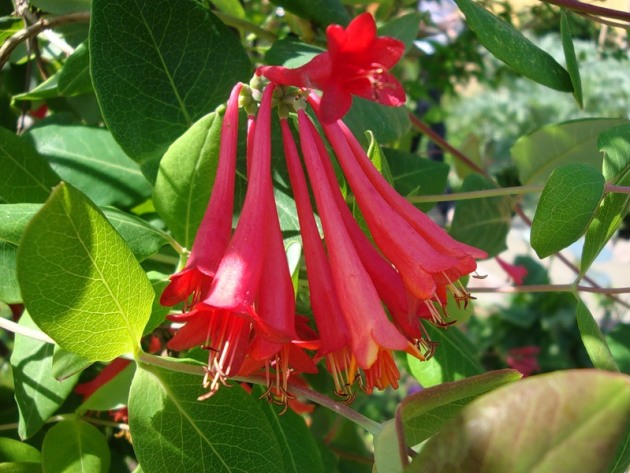
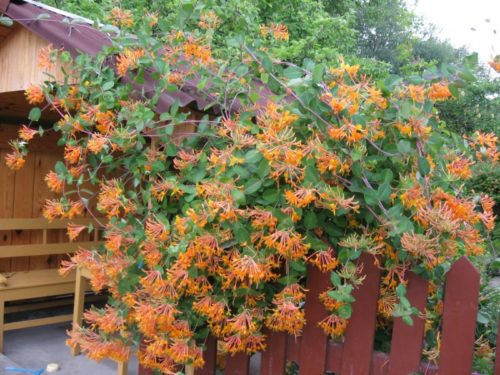
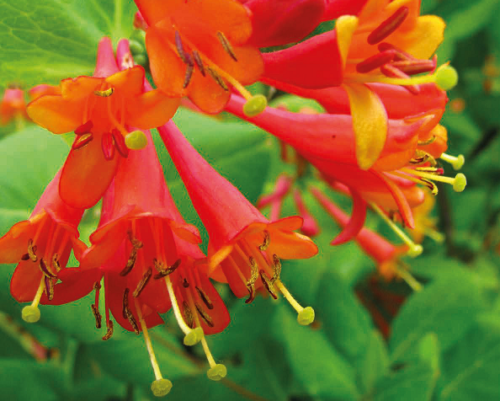
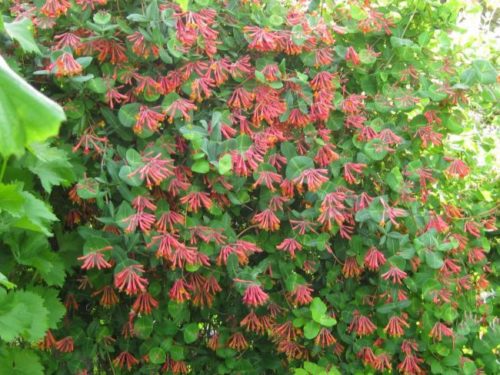
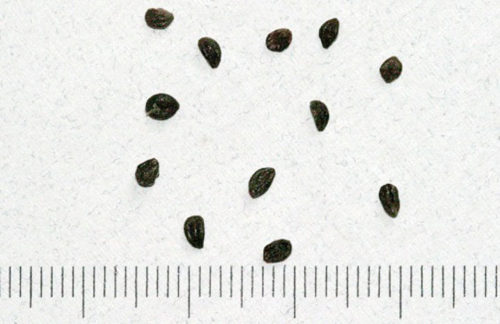
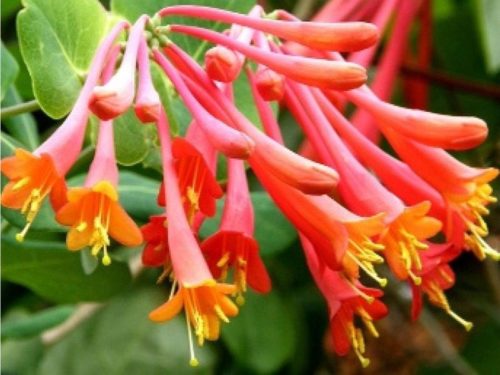
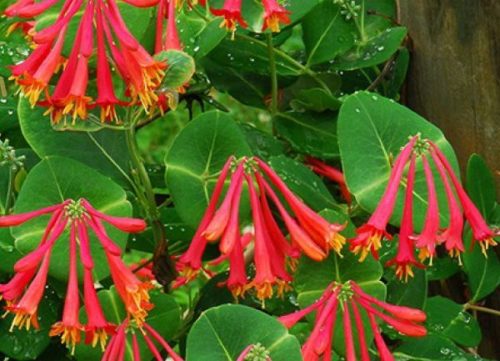

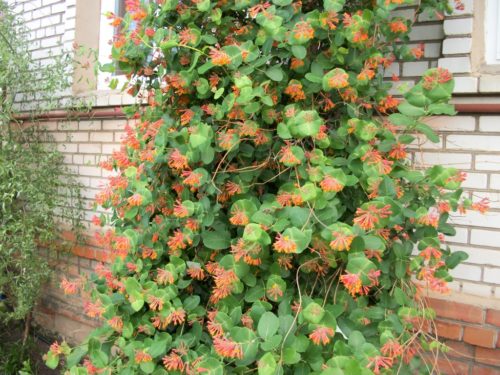

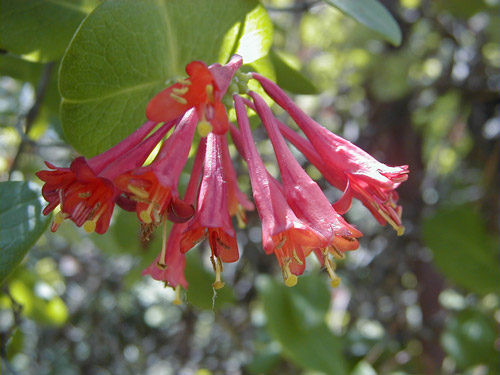
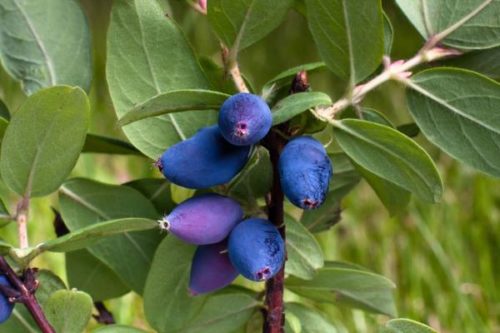
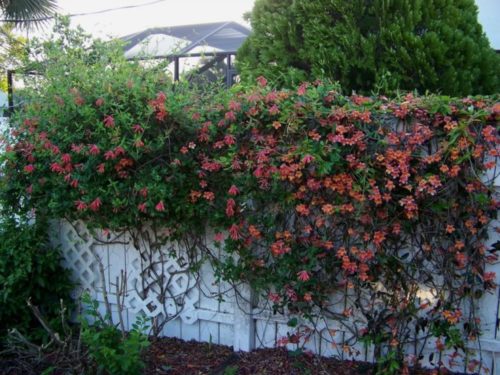
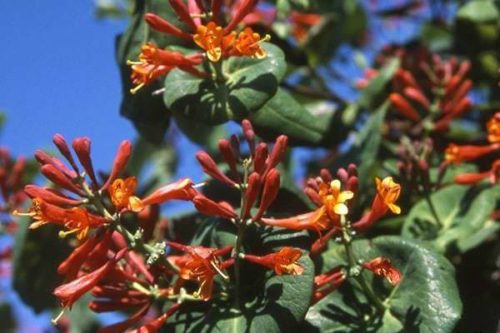
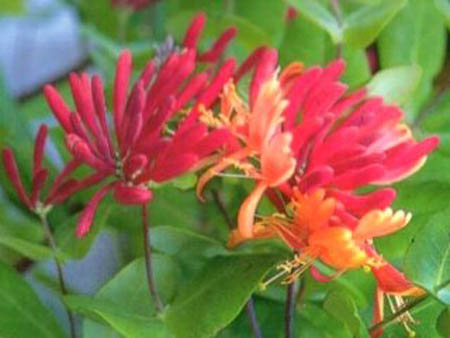












 Start a discussion ...
Start a discussion ...